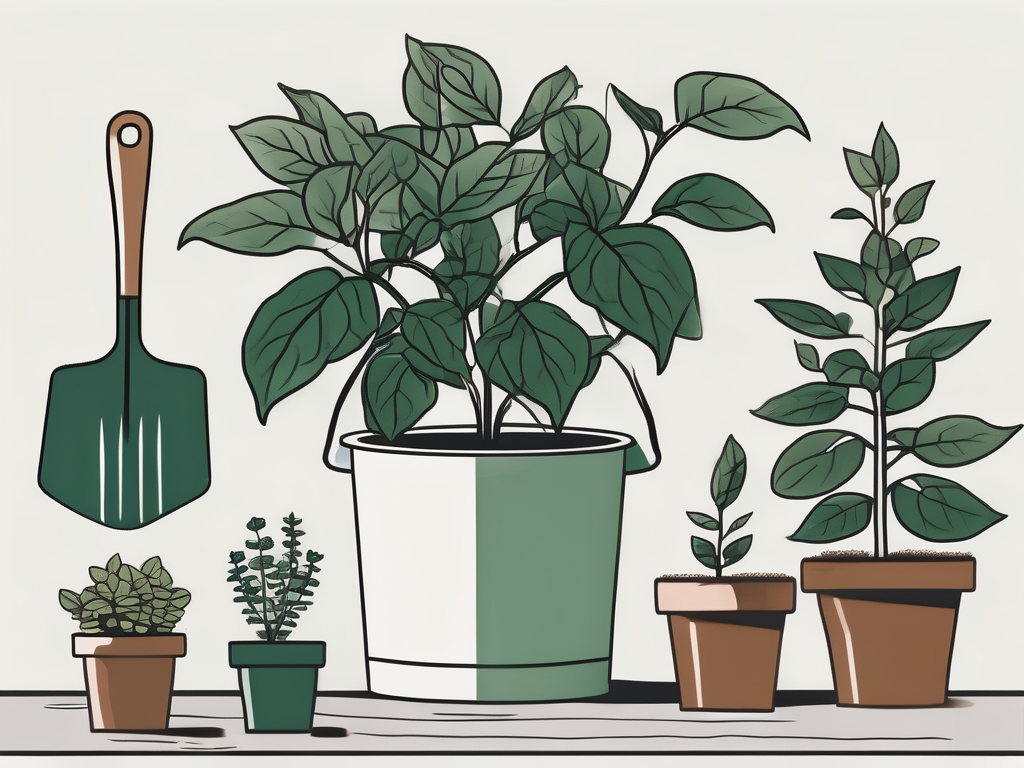
Have you ever seen a plant that seems to react to your touch? The Sensitive Plant, or Mimosa pudica, is exactly that—a fascinating plant that folds its leaves when touched. This curious behavior has captured the imagination of plant lovers and sparked countless conversations about the wonders of nature.
In this article, we'll dive into the incredible benefits of the Sensitive Plant, from its unique ability to interact with its environment to its role in home decor and mental well-being. We'll also cover how to care for this intriguing plant and how it can fit into your home. So, let's explore why this plant is more than just a pretty face!
The Sensitive Plant's Unique Behavior
One of the first things you'll notice about the Sensitive Plant is its almost magical reaction to touch. When the leaves are disturbed, they fold up and droop, only to reopen after a short time. This movement is called "thigmonasty," a rapid response to stimulus that is quite rare in the plant world.
So, why does this plant behave this way? While it's hard to say for sure, scientists believe the Sensitive Plant's rapid movements may serve as a defense mechanism. By closing its leaves, the plant might deter herbivores from munching on it, as the sudden movement could startle them or make the plant look less appetizing. It's like the plant's way of saying, "Hands off, buddy!"
Interestingly enough, this behavior isn't just a party trick; it plays a crucial role in the plant's survival. Not only does the Sensitive Plant respond to touch, but it also reacts to other stimuli, like heat and darkness. As night falls, the plant folds its leaves, almost as if it's getting ready to sleep, conserving energy for the next day.
Benefits of Having a Sensitive Plant at Home
Now that we've covered the fascinating movements of the Sensitive Plant, let's talk about why you might want one in your home. Beyond its captivating response to touch, the Sensitive Plant offers several benefits that can make it a rewarding addition to your indoor garden.
First off, this plant can serve as a natural conversation starter. Imagine having friends over, and one of them touches the plant, only to see it react instantly. It's a surefire way to get people talking and interested in the wonders of nature. Plus, it can be a great educational tool for kids, teaching them about plant biology in a hands-on way.
Additionally, the Sensitive Plant can improve your mental well-being. Caring for plants has been shown to reduce stress and anxiety, and this interactive plant takes that a step further by offering a more dynamic experience. Watching it respond to your touch can be incredibly satisfying, almost like you're having a mini interaction with a living being.
Finally, the Sensitive Plant can add a touch of greenery to your home decor. Its delicate, fern-like leaves and gentle movements can soften the atmosphere in any room, making it feel more inviting and peaceful.
Caring for Your Sensitive Plant
Thinking of getting a Sensitive Plant for yourself? Great choice! However, like any plant, it requires some care to thrive. Here are some practical tips to keep your Sensitive Plant healthy and happy.
Light: The Sensitive Plant loves bright, indirect sunlight. Too much direct sunlight can scorch its leaves, while too little can hinder its growth. A spot near a window with filtered light is ideal.
Water: Keep the soil consistently moist, but not waterlogged. It's best to water when the top inch of soil feels dry. Use room-temperature water to avoid shocking the plant.
Humidity: This plant thrives in humid environments. If your home is dry, consider using a humidity tray or misting the plant regularly to keep it happy.
Temperature: The Sensitive Plant prefers temperatures between 60-85°F (15-29°C). Avoid placing it near cold drafts or air conditioning vents.
Soil: Use well-draining potting soil to prevent root rot. A mix that's rich in organic matter works best.
By following these simple guidelines, you'll create an environment where your Sensitive Plant can flourish, rewarding you with its delightful movements and vibrant foliage.
The Sensitive Plant's Role in Interior Design
Adding a Sensitive Plant to your home isn't just about having a cool plant to show off—it's also about enhancing your living space. The plant's unique appearance and behavior can add a dynamic element to your decor.
Picture this: a cozy reading nook with a few potted plants, including a Sensitive Plant. As you reach for a book, you touch the plant, and it gently folds its leaves. It's a small moment, but it adds a layer of interaction to your space, making it more than just a static setup.
The Sensitive Plant's delicate leaves can also contrast beautifully with other plants in your collection. Pair it with broad-leafed plants or those with bold colors to create a visually interesting display. Its fern-like texture and movement can add a sense of whimsy and wonder to any arrangement.
Moreover, the plant's compact size makes it suitable for various settings, from desktops to windowsills. You don't need a sprawling garden to enjoy its company. A small pot can fit just about anywhere, bringing life to even the smallest corners of your home.
Relieving Stress with the Sensitive Plant
We've touched on the mental health benefits of caring for plants, but the Sensitive Plant offers something special in this area. Its interactive nature provides a unique form of stress relief that goes beyond the passive enjoyment of traditional houseplants.
Imagine having a tough day at work, and you come home feeling stressed and frazzled. Taking a moment to interact with your Sensitive Plant can be surprisingly calming. Watching the leaves respond to your touch can help ground you in the present moment, offering a gentle reminder of the simple joys in life.
This small act of mindfulness can be a soothing ritual, a way to pause and reset your mind. And the best part? It's always there, ready to offer you a moment of tranquility whenever you need it.
Additionally, some plant people find that the Sensitive Plant's movements can be meditative. Watching the leaves slowly open and close can be as soothing as watching a fish swim in a tank or waves lapping at the shore. It's a small but meaningful way to incorporate relaxation into your daily routine.
Using the Sensitive Plant as an Educational Tool
The Sensitive Plant isn't just a pretty face; it's also a fantastic educational tool. Whether you're a parent, teacher, or simply someone who loves sharing knowledge, this plant offers countless learning opportunities.
For kids, the Sensitive Plant can be a hands-on way to learn about plant biology. You can teach them about how plants respond to stimuli and why this is important for their survival. The plant's rapid movements make these concepts tangible and exciting, sparking curiosity and encouraging further exploration.
In a classroom setting, the Sensitive Plant can be a centerpiece for lessons on plant physiology and ecology. Students can observe its reactions, make hypotheses, and conduct simple experiments to understand how different factors affect its behavior.
For adults, it can be a gateway to exploring more complex topics like plant signaling and communication. The Sensitive Plant's movements are part of a larger conversation about how plants interact with their environment, and delving into this can open up a whole new world of knowledge.
Bringing Nature Indoors with the Sensitive Plant
Incorporating plants into your home is a wonderful way to stay connected with nature, and the Sensitive Plant is a perfect candidate for this. Its presence can help bridge the gap between the indoors and outdoors, reminding you of the beauty and complexity of the natural world.
Having a Sensitive Plant at home can also inspire you to spend more time in natural settings. Its fascinating behavior might encourage you to explore other interactive aspects of nature, like watching birds or observing insects in your garden.
Moreover, the act of caring for a Sensitive Plant can foster a deeper appreciation for all living things. As you nurture the plant, you're participating in a larger cycle of life, acknowledging your role in the environment, and cultivating a sense of responsibility and stewardship.
In this way, the Sensitive Plant can be more than just an indoor decoration; it can be a reminder of the interconnectedness of all life and the importance of preserving our natural world.
Creating a Beautiful, Plant-Filled Space
If you're looking to create a plant-filled oasis in your home, the Sensitive Plant can play a vital role. Its unique characteristics make it a standout addition to any plant collection, offering both visual appeal and interactive elements.
To design a space that truly feels alive, consider mixing the Sensitive Plant with a variety of other houseplants. This diversity can create a rich tapestry of colors, textures, and shapes, making your home feel like a lush sanctuary.
Think about incorporating different heights and sizes to add depth and dimension to your arrangements. The Sensitive Plant's compact form can complement taller plants, while its delicate leaves can contrast nicely with broader foliage.
Additionally, you can use the Sensitive Plant as a focal point or accent piece in your decor. Place it in a prominently visible area where you and your guests can enjoy its movements and admire its beauty. A well-placed Sensitive Plant can transform an ordinary space into a vibrant, living work of art.
Final Thoughts
The Sensitive Plant offers so much more than a simple houseplant. Its unique movements and benefits make it a captivating addition to any home, providing not only visual interest but also mental and emotional wellness. From stress relief to educational opportunities, this plant truly has something special to offer.
At Cafe Planta, we believe that plants have the power to bring people together and inspire us to connect with nature and each other. If you have any questions about how to take care of your plants, we'd love to hear from you. Please feel free to email us or DM us on Instagram. Whether you're an experienced plant parent or just starting out on your plant journey, we're excited to share our love of plants with you and help you create a beautiful, thriving plant collection in your home.












